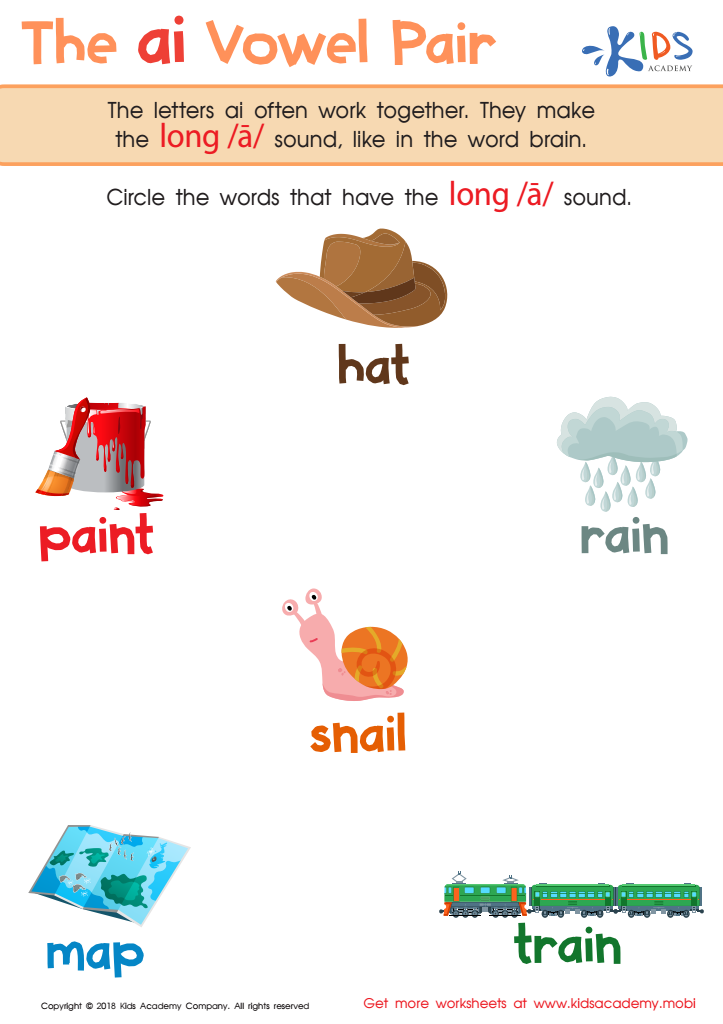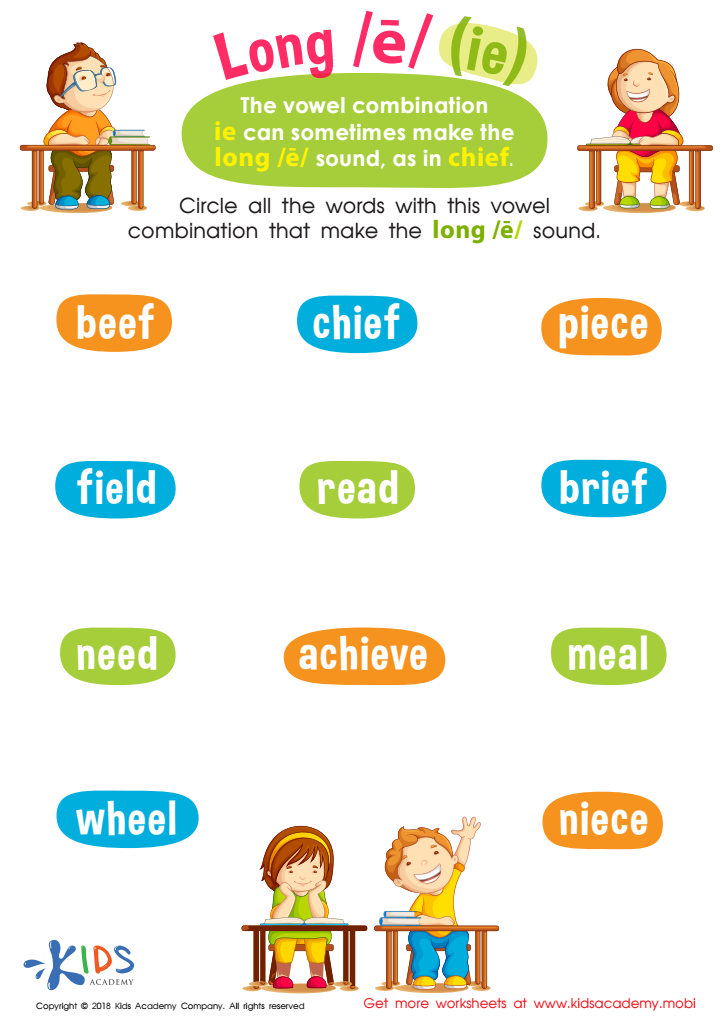Normal Vowel Blends Worksheets for Ages 3-7
12 filtered results
-
From - To
Discover our engaging Normal Vowel Blends Worksheets designed specifically for children aged 3-7! These interactive printables help young learners master essential phonics skills by focusing on vowel blends. Each worksheet is thoughtfully crafted to promote early literacy through fun activities, including tracing, coloring, and simple phonetic exercises. By reinforcing sound recognition and blending practice, these worksheets empower children to build foundational reading skills with confidence. Perfect for at-home learning or classroom use, parents and educators will find these resources valuable for sparking a love of reading. Start your child's literacy journey today and watch them flourish with vowel blends!


The AI Vowel Pair Worksheet


Reading: Long E and IE Worksheet


Reading: EA as in Bread Worksheet


Reading: OW and OU Words Worksheet


Reading: OI and OY Worksheet


Reading: AW and AU Words Worksheet


Reading: OA or OW Worksheet


Reading: AI Vowel Team Worksheet


Reading: EA and EE Worksheet


short vowels Worksheet


Vowel Diphthongs OI OY Worksheet


Long Vowel E Printable
Normal vowel blends, which involve combinations of vowels with consonants to produce distinct sounds, play a crucial role in early literacy development for children aged 3 to 7. Parents and teachers should care about these blends as they are foundational for reading and writing skills essential at this age. Recognizing and properly articulating vowel blends helps children decode words, fostering their ability to sound out unfamiliar terms.
Furthermore, mastering vowel blends enhances phonemic awareness, a key auditory skill that assists children in isolating and manipulating sounds in words. This skill not only supports reading fluency but also boosts spelling accuracy and vocabulary development. Engaging with vowel blends through fun activities, games, and storytelling creates a rich linguistic environment that promotes learning through play.
Additionally, early exposure to vowel blends aids in the development of comprehension skills. By understanding how different sounds fit together, children can better grasp meaning during reading.
In summary, a focus on normal vowel blends is vital for helping young learners develop essential language skills that contribute to academic success and a lifelong love of reading. Fostering these abilities in the early years cultivates a strong foundation for future learning endeavors.
 Assign to My Students
Assign to My Students













